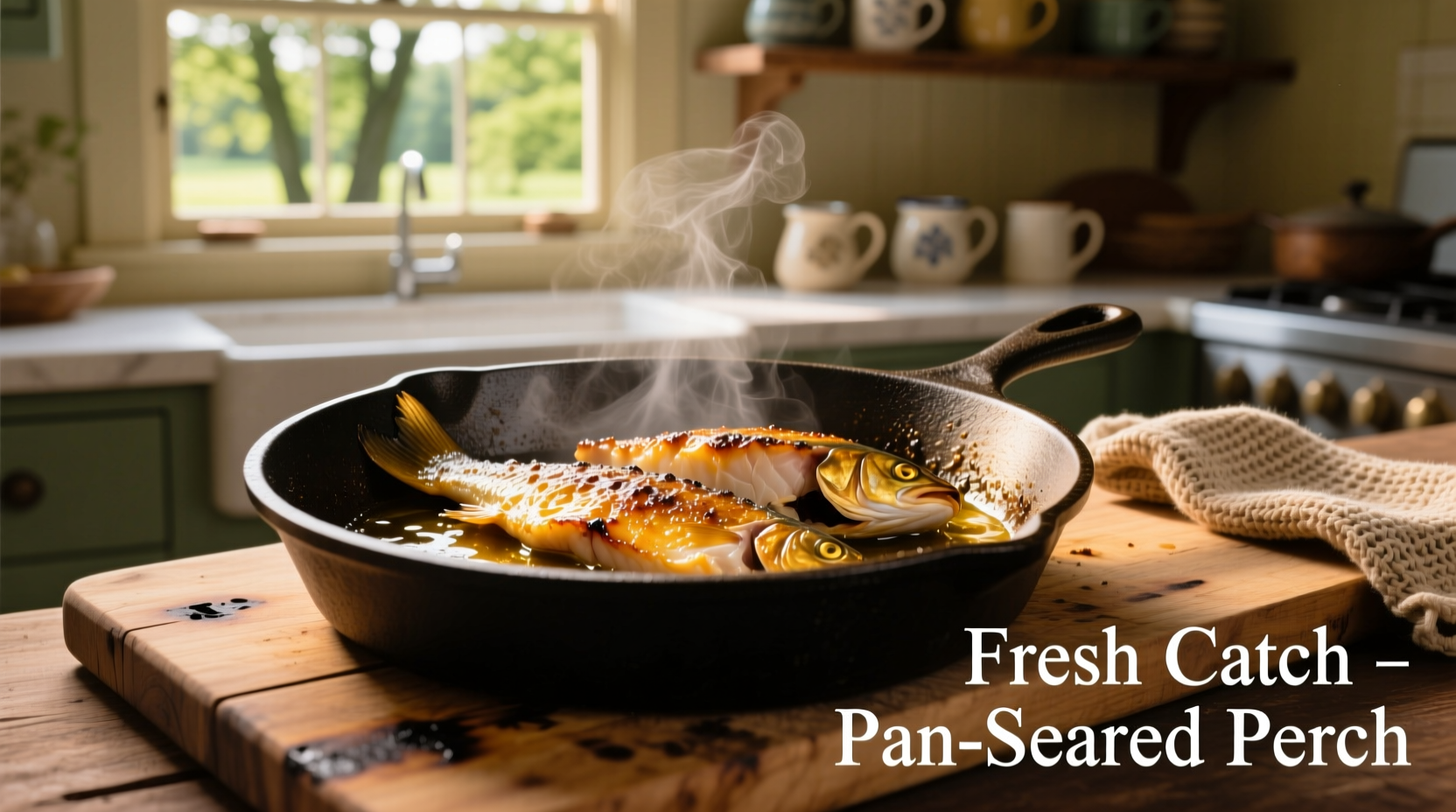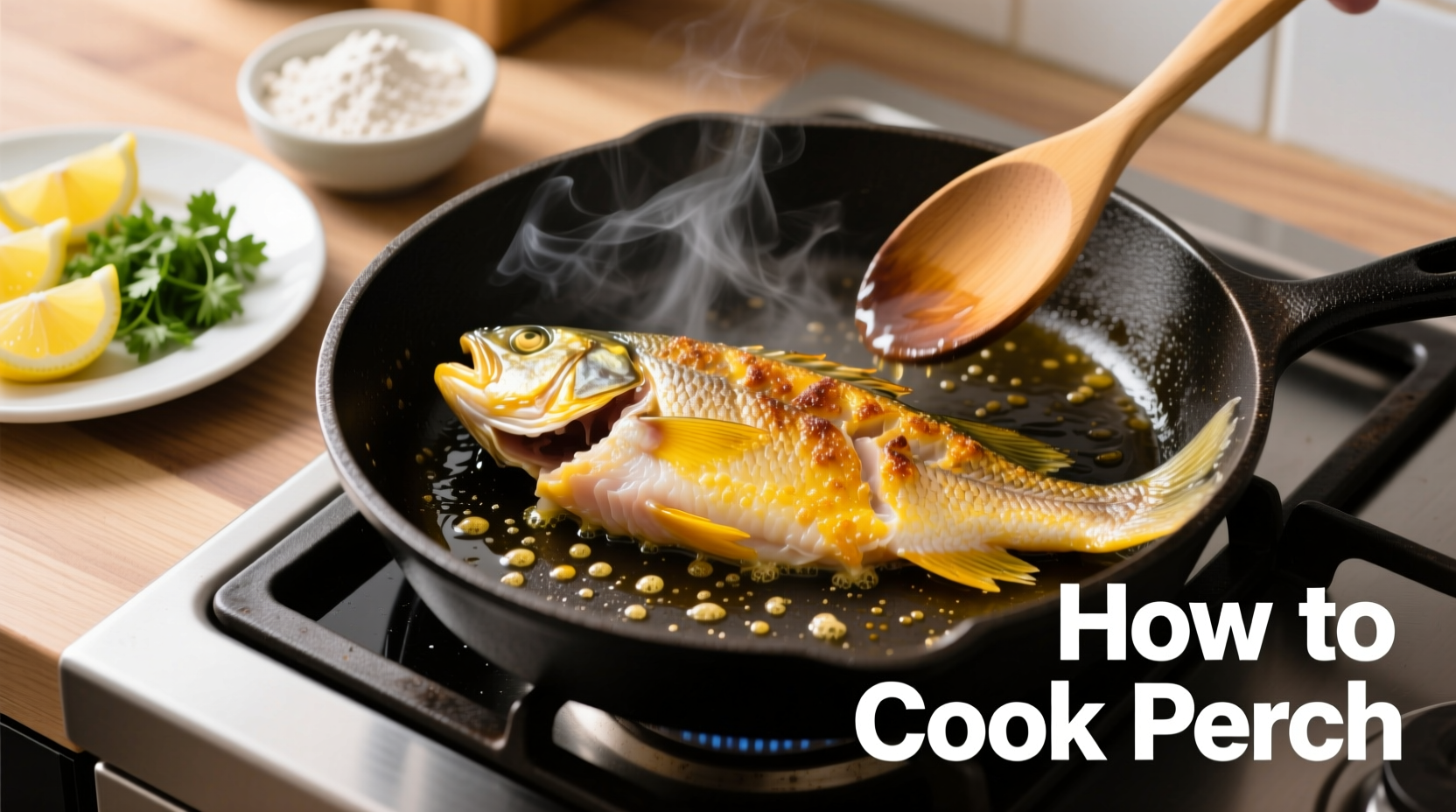Discover how to cook perch that's crispy on the outside and tender inside with this practical guide. Perch, a delicate freshwater fish with mild flavor, cooks quickly and pairs beautifully with simple seasonings. Whether you're a beginner or experienced cook, this step-by-step method ensures restaurant-quality results every time—no special equipment needed.
Why Perch Deserves a Spot in Your Weekly Menu
Perch offers exceptional versatility in the kitchen while delivering impressive nutritional benefits. This lean fish provides 21 grams of protein per 3-ounce serving with just 90 calories, according to USDA nutritional data. Its firm yet flaky texture holds up well to various cooking methods while absorbing flavors beautifully. Sustainable fishing practices have made perch increasingly available year-round, though spring through fall yields the freshest catches.
| Cooking Method | Time Required | Temperature | Best For |
|---|---|---|---|
| Pan-Frying | 8-10 minutes | 350°F (175°C) | Crispy skin, quick meals |
| Baking | 12-15 minutes | 400°F (205°C) | Healthier preparation, multiple portions |
| Grilling | 6-8 minutes | Medium-high heat | Summer cooking, smoky flavor |
Essential Preparation Checklist
Before you start cooking perch, gather these essentials. Having everything ready prevents rushed decisions during the cooking process—critical when working with delicate fish that cooks in minutes.
Equipment You'll Need
- Heavy-bottomed skillet (cast iron works best for even heating)
- Fish spatula with thin, flexible edge
- Instant-read thermometer
- Paper towels for drying fillets
- Mixing bowls for coating
Ingredient Selection Guide
When selecting perch for cooking, look for firm fillets with bright color and no fishy odor—fresh perch should smell like clean water. The National Oceanic and Atmospheric Administration (NOAA) recommends choosing perch caught from Great Lakes or Midwest rivers for optimal freshness in most regions. Avoid fillets with brown spots or excessive liquid in the packaging.
Step-by-Step Cooking Process
Module 1: Proper Fish Preparation
Drying perch thoroughly is the most critical step many home cooks miss. Moisture prevents proper browning and causes oil to splatter. Pat fillets completely dry with paper towels, then refrigerate on a wire rack for 15 minutes. This air-drying technique, recommended by culinary professionals, creates the perfect surface for crispy results.
Module 2: Simple Seasoning Approach
Perch's delicate flavor shines with minimal seasoning. Combine ½ cup all-purpose flour, 1 teaspoon paprika, ½ teaspoon garlic powder, and ¼ teaspoon cayenne in a shallow dish. For gluten-free options, use rice flour which creates an exceptionally light crust. Season fillets with salt and pepper just before coating—salting too early draws out moisture.
Module 3: Perfect Pan-Frying Technique
Heat ¼ inch of canola or avocado oil in your skillet over medium-high heat until it reaches 350°F. Carefully place seasoned fillets skin-side down (if skin-on), without crowding the pan. Cook undisturbed for 3-4 minutes until golden brown. Flip gently and cook 2-3 minutes more until internal temperature reaches 145°F. Never press down on the fish—that squeezes out precious moisture.

Module 4: Doneness Testing and Resting
The moment your perch flakes easily with a fork but still appears moist indicates perfect doneness. Overcooking transforms delicate perch into dry, tough fish. Remove from heat when internal temperature hits 140°F—the residual heat will carry it to the FDA-recommended 145°F. Let rest for 3 minutes before serving to allow juices to redistribute.
Troubleshooting Common Cooking Issues
Preventing Sticking Problems
Fish sticking to the pan usually indicates insufficient preheating. Ensure your oil shimmers but doesn't smoke before adding perch. If using cast iron, proper seasoning of the pan matters—well-seasoned cast iron creates a natural non-stick surface. Wait until the fish releases easily before attempting to flip.
Managing Bones in Whole Perch
When cooking whole perch, place fillets skin-side down and cook until nearly done, then carefully flip. The bones will separate more easily from cooked fish. For fillets, run your fingers over the surface before cooking to detect any remaining pin bones—these small bones are common in perch and should be removed with tweezers.
Storage and Leftover Recommendations
Store cooked perch in an airtight container in the refrigerator for up to two days. Reheat gently in a 275°F oven for 8-10 minutes—never microwave, which makes fish rubbery. Leftover perch shines in fish tacos, salads, or chowder. For best results when reheating, place fish on a wire rack over a baking sheet to maintain crispness.











 浙公网安备
33010002000092号
浙公网安备
33010002000092号 浙B2-20120091-4
浙B2-20120091-4